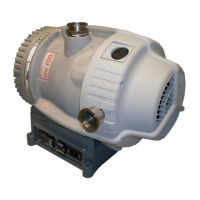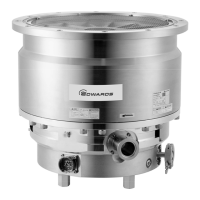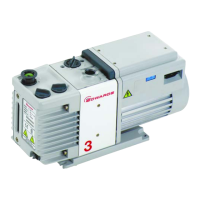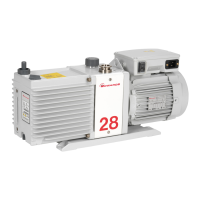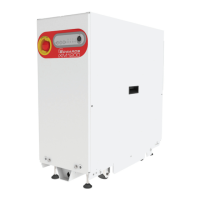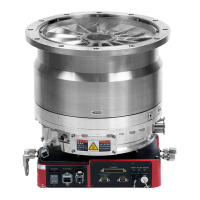WARNING:
If pumping for a prolonged period above 100 mbar inlet pressure, use an exhaust
silencer (refer to Silencer on page 34) or connect to an appropriate exhaust line.
Before connecng the pump to the vacuum system, remove the plasc cap from the
inlet and exhaust and ensure the inlet strainer is ed to the pump inlet port. Use
appropriate NW40 vacuum ngs for connecon to the system.
Take note of the following informaon when connecng the pump to the vacuum
system.
▪
To minimise noise and exhaust emissions, it is recommended that the pump is
connected to an exhaust line or a silencer (refer to Silencer on page 34).
▪
For opmum pumping speeds, ensure that the pipeline connected to the pump
inlet is as short as possible and has a suitable internal diameter.
▪
Support the vacuum pipeline to prevent loading of the coupling joints.
▪
If the pump is operated with the exhaust line blocked, a pressure of 5.5 bar(a) may
be generated in the exhaust pipework. Connect the pump using appropriate
pipework and ngs.
▪ If necessary, incorporate exible bellows in the system pipelines to reduce the
transmission of vibraon and prevent loading of the coupling joints. If using
exible bellows, ensure the use of bellows that have a maximum pressure rang
which is greater than the highest pressure that can be generated in the system.
The use of manufacturer's bellows is recommended.
▪ Incorporate an inlet isolaon valve in the pipeline between the vacuum system and
pump. This will isolate the vacuum system from the pump when it is switched o
and prevent the suck‑back of process gases and debris into the vacuum system.
▪
Ensure that the sealing surfaces are clean and scratch‑free.
We recommend the use of an exhaust extracon system suitable for use with all process
gases being pumped. Ensure that the exhaust extracon system cannot become blocked
or obstructed when the pump is operang.
A small amount of p seal wear dust may collect in the exhaust duct of the pump. The
dust may be blown out with the inial burst of air aer the pump has been vented. This
is quite common and the amount of dust seen will reduce over me.
4.7 Leak test the system
Leak test the system and seal any leaks found aer installing the pump.
Page 20
A73101880_F - Installaon

